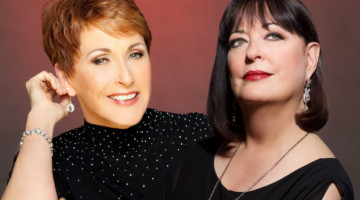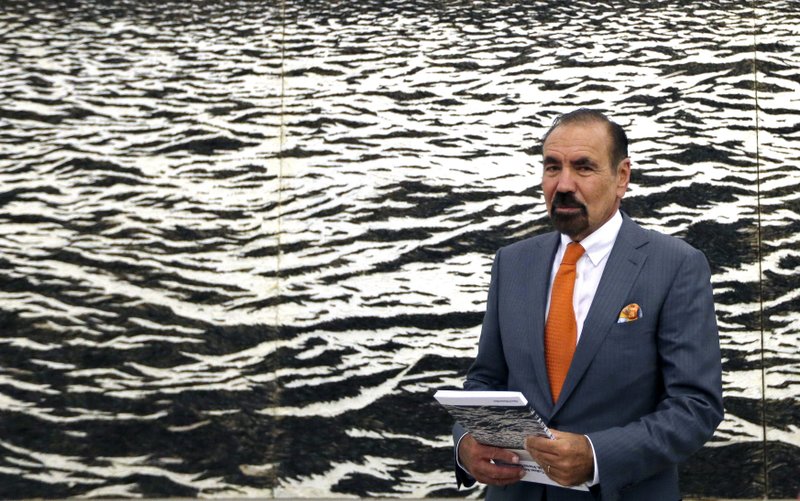Miami shows embrace Cuba-based artists, as tensions linger
MIAMI (AP) — President Donald Trump’s effort to reverse a historic opening between the U.S. and Cuba is raising tensions in South Florida’s exile enclave, where wealthy patrons and institutions have sought to unify Cubans on both sides through unprecedented art exhibits.
Museums and cultural centers are rewriting old rules on the kind of Cuban art that has a place in Miami now that decades have passed since exiles bombed a gallery and torched a painting in the 1980s to draw a line against supporting any artist still living under Fidel Castro.
Collectors and curators now find receptive audiences in Miami when they show contemporary Cuban artists who established themselves under Communist rule. But by upending the old order, they’re exposing a new conflict: Some artists in the diaspora see artists still working in Cuba as unfair competition.
A show at the Perez Art Museum Miami is bringing both sides together in an exhibit so extensive, it will be presented in three parts over 10 months. Another exhibit in South Florida gathered works from 20 artists from present-day Cuba. And a Miami-based Cuban arts foundation announced earlier this year that it will open an important prize to include visual artists, writers and musicians who still live in the communist nation.
Jorge Perez, a billionaire son of Cuban exiles who donated millions in cash and art and earned the naming rights to Miami’s premier art museum, said the old dichotomy of “Cuban from Cuba, Cuban from Miami” should no longer apply.
“Putting them together is very, very important,” Perez said. “The more we can get artists and people to come here and see what they can do — in a free way without being bothered — the better.”
Tobias Ostrander, the Perez museum’s curator, says he’s been careful to showcase both sides in “On the Horizon,” which includes more than 170 works.
“Some people feel that there is often more interest in artists working on the island than working in Miami,” Ostrander said. “If people really pay attention to the way that we are approaching it, we are very much recognizing the sensitivities around showing contemporary Cuban art, but I hope presenting it in a way that encompasses or leaves space for a lot of different views.”
Many of the works wrestle with the idea of Cubans feeling trapped by political and geographical divisions. Some draw inspiration from the ocean as a symbol of danger.
One of the stunners is “Island (sea-escape)” by Yoan Capote, a sculptor and painter who lives in Havana. Four huge panels depict a choppy black sea. A closer look reveals that the choppy dark waters are in fact half a million fish hooks, sticking out from the canvas.
“I like what has prevailed: a vision that is more tolerant and where the most important thing is the artistic quality,” said Roberto Fabelo, a Havana-based painter whose canvas of nude women with bird masks is on display.
But passions are running high again after Trump’s victory reinvigorated hardliners. Many older people still favor shunning the island and everyone on it as long as a Castro is in power. Even younger Cubans still feel a personal connection when it comes to Cuba.
“I have dozens of friends who are painters in Miami who are starving and they have no paintings in that museum,” Midiala Rosales, a singer-songwriter in the heavily-Cuban suburb of Hialeah, said in a heated debate about Cuban artists aired by the Spanish-language station America TeVe. “We are marginalized. We live in exile. We have no country and no place to show our work.”
Such sentiments also apply to musicians. Concerns about a backlash had waned since 2001, when the Latin Grammys relocated from Miami to Los Angeles rather than exclude Cuban nominees. But Miami Mayor Tomas Regalado took back the keys to the city this year from Gente de Zona, famous for its cover of the Enrique Iglesias hit “Bailando,” after hardliners became outraged by a video showing members of the Cuban band dancing with Raul Castro’s grandson.
In May, the American Museum of the Cuban Diaspora canceled an exhibition with the CINTAS Foundation after the Miami-based Cuban arts organization decided to award $20,000 fellowships to artists living in Cuba. That museum’s curator, Jesus Rosado, said the awards would invite an “ideological invasion.”
“A lot of exiles feel that while the Cuban government supports artists of its party, there is no patronage for Cubans on the island who are not members of the party or certainly no support for the exile community,” said Victor Deupi, board president of CINTAS. “But how do you solve that? By doing the same thing? We are not a political agency.”
Aida Levitan, a Perez museum trustee with a nonprofit arts foundation, says Cubans long ignored by institutions deserve to be seen.
“If it involves bringing artists from Cuba to do that, it’s a wonderful thing,” she said.
[livemarket market_name="KONK Life LiveMarket" limit=3 category=“” show_signup=0 show_more=0]






No Comment